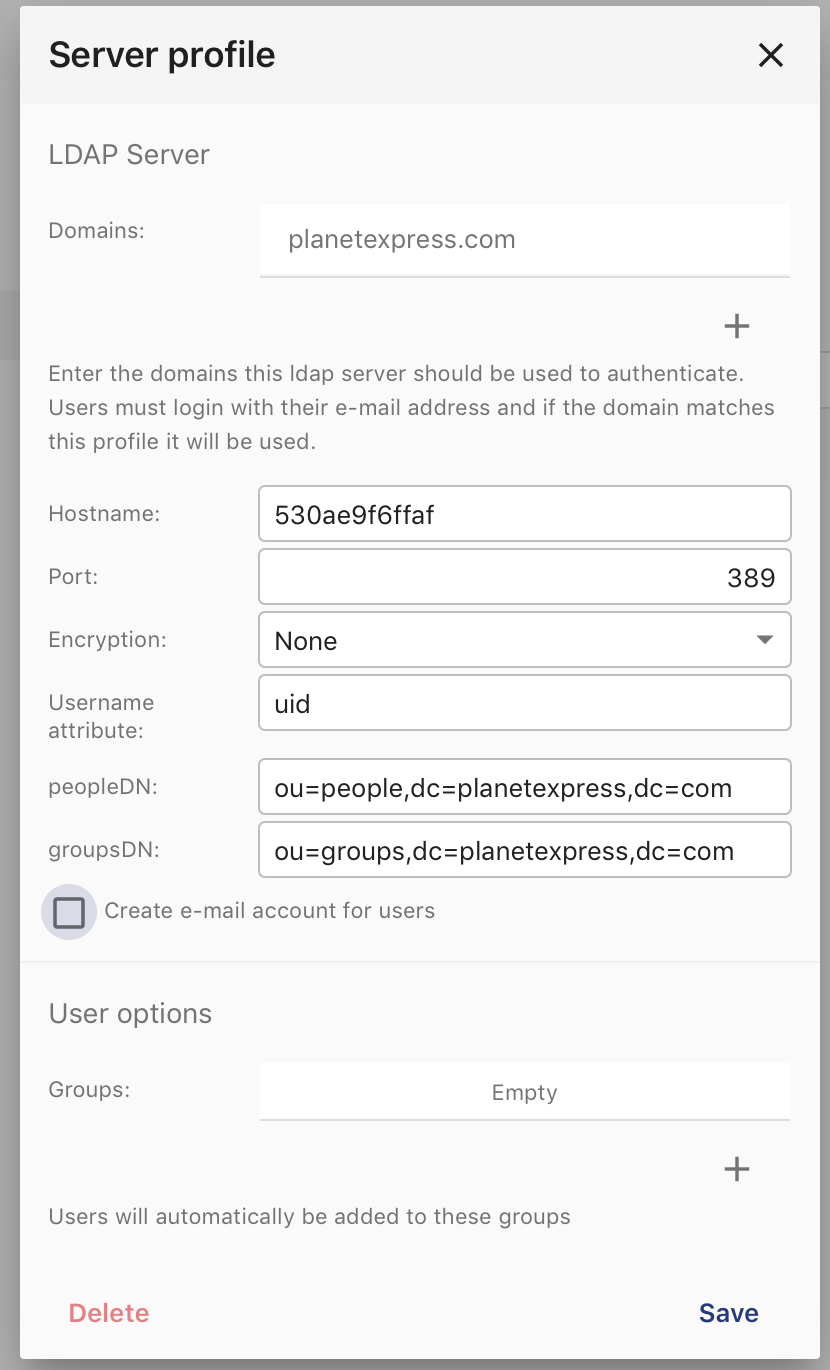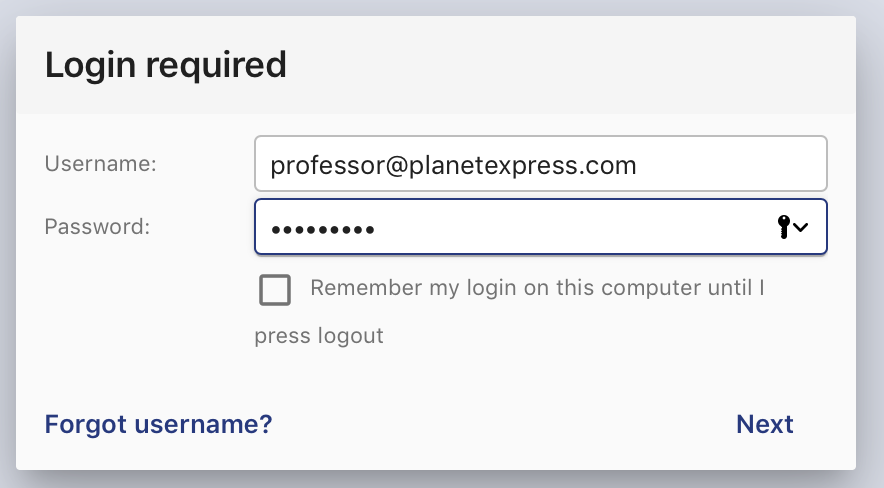LDAP
You can use an LDAP server to authenticate and autocreate Group-Office users and e-mail accounts.
Install
Install the ldapauthenticator module at Start menu -> Modules
Reload Group-Office
Configure
Go to System Settings -> Authentication

There’s a new section for LDAP server profiles. Click on the add button to add a profile.
Server profile
Enter the LDAP server details and domains. The domains are important because users are stored as and need to login with <LDAPUSER>@<DOMAIN> to trigger the LDAP authenticator.

Default domain
A default domain can be set in the “Authentication” page. When that is set the user can also login without the domain. Make sure there’s no local user with the same username because that will be preferred over the LDAP user. So if there’s a user “admin” on Group-Office and a user “admin” on the LDAP server. You can’t login without the domain.
Microsoft ActiveDirectory
If you’re using Microsoft ActiveDirectory then you should use “samaccountname” as the username attribute. The users DN is typically CN=Users,DC=example,DC=com
Now check if you can login with the LDAP domain:

It should autocreate the LDAP user. In the user settings it won’t be possible to change the password as that’s not supported yet:

User query
The user query can be used to narrow down the users that are allowed to login and / or synchronized.
For example all users except the members of ‘ship_crew’:
(&(objectClass=inetOrgPerson)(!(memberOf=CN=ship_crew,ou=people,dc=planetexpress,dc=com)))
Synchronization
It’s also possible to synchronize users and groups from the LDAP server. Simply enable the checkboxes and optionally adjust the queries to fetch the correct users and groups.
When you enable the sync, it will schedule the sync to run the next minute. After that it will sync daily at midnight.

Mapping
When users are created from LDAP a mapping is made from LDAP attributes to the Group-Office user. This is the default mapping which also contains some examples:
$config['ldapMapping'] = [
'enabled' => function($record) {
//return $record->ou[0] != 'Delivering Crew';
return true;
},
'diskQuota' => function($record) {
// return in bytes
//return 1024 * 1024 * 1024;
return null;
},
'email' => 'mail',
// Example function to look for a preferred domain
// 'email' => function($record) {
// // Look for email address with preferred domain
// foreach($record->mail as $email) {
// if(stristr($email, '@example.com')) {
// return $email;
// }
// }
//
// //If not found return first.
// return $record->mail[0] ?? null;
// },
'recoveryEmail' => 'mail',
'displayName' => 'cn',
'firstName' => 'givenname',
'lastName' => 'sn',
'initials' => 'initials',
'jobTitle' => 'title',
'department' => 'department',
'notes' => 'info',
// 'addressType' => function($record) {
// return \go\modules\community\addressbook\model\Address::TYPE_WORK;
// },
'street' => 'street',
'zipCode' => 'postalCode',
'city' => 'l',
'state' => 's',
// 'countryCode' => function($record) {
// return "NL";
// },
'homePhone' => 'homePhone',
'mobile' => 'mobile',
'workFax' => 'facsimiletelephonenumber',
'workPhone' => 'telephonenumber',
// // example for contact custom fields
// 'contactCustomFields' => [
// 'field' => 'employeeType'
// ],
//
// // example for user custom fields
// 'userCustomFields' => [
// 'field' => 'ou'
// ]
'organization' => 'organizationname',
// 'homeDir' => function($record) {
// //relative path from group-office file_storage_path
// return "ldap_homes/" . $record->uid[0];
// }
];
You can override this default by entering this in your config.php file.
Note
Mappings are supported since 6.5.47
Advanced
When a user or group is synchronized. It fires an event. So it’s possible to build a module that can customize the LDAP synchronization.
If you want to test the sync on the terminal lookup the ID from your configuration in table ‘ldapauth_server’ and run:
Test connectivity:
php cli.php community/ldapauthenticator/Sync/test --id=<ID FROM DATABASE> --debug=1
Test a single user:
php cli.php community/ldapauthenticator/Sync/test --id=<ID FROM DATABASE> --username=<USERNAME>
To sync users:
php cli.php community/ldapauthenticator/Sync/users --id=<ID FROM DATABASE> --dryRun=1 --delete=1 --maxDeletePercentage=50
And for groups:
php cli.php community/ldapauthenticator/Sync/groups --id=<ID FROM DATABASE> --dryRun=1 --delete=1 --maxDeletePercentage=50
For debugging you could also add –debug=1 to output some extensive debug information
Test environment
For testing I’ve used this docker image: https://hub.docker.com/r/rroemhild/test-openldap/